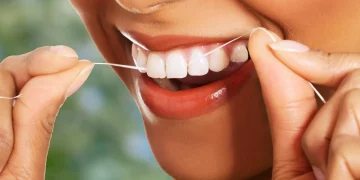Introduction
Achieving a confident smile goes beyond just the initial treatment—it’s about maintaining oral health and ensuring that the improvements last for many years. Whether you’ve undergone orthodontic treatment, teeth whitening, dental implants, or other procedures, the key to sustaining a vibrant and healthy smile is good oral hygiene and consistent care. Certain oral care techniques can significantly enhance the results of dental treatments and contribute to long-term oral health, keeping your smile looking fresh and beautiful for a lifetime.
In this article, we’ll explore essential oral care practices that not only enhance the effects of dental treatments but also help you maintain a radiant and confident smile over the years.
1. Brushing Correctly: The Foundation of Effective Oral Care
Why Brushing Matters:
Brushing your teeth correctly is the cornerstone of good oral hygiene. Proper brushing removes plaque, prevents cavities, and maintains gum health, all of which contribute to the overall longevity of your dental treatments.
Techniques for Brushing:
- Brush Twice a Day: Brush your teeth at least twice a day—once in the morning and once before bed. After meals, it’s best to wait 30 minutes before brushing to avoid damaging enamel when it’s softened by food.
- Use a Soft-Bristled Toothbrush: A soft-bristled brush is gentle on your teeth and gums but still effectively removes plaque and debris.
- Proper Brushing Motion: Use small, gentle circular motions rather than vigorous back-and-forth brushing. This helps prevent enamel erosion and gum irritation.
- Brush for Two Minutes: Ensure that you brush for at least two minutes each time. This ensures all areas of your mouth receive adequate attention.
- Focus on Problem Areas: Pay special attention to areas that may be more prone to plaque buildup, such as the back molars and the gum line.
Why It Enhances Treatment:
By brushing your teeth properly, you remove plaque and food particles that can contribute to gum disease, tooth decay, or staining. For example, if you’ve had teeth whitening or dental implants, brushing well ensures that the results last longer by preventing discoloration and inflammation around implant sites.
2. Flossing: A Key Step in Preventing Gum Disease and Cavities
Why Flossing Matters:
Flossing is essential for cleaning areas that a toothbrush cannot reach, specifically between your teeth and along the gum line. Skipping flossing can result in plaque buildup, which may lead to gum disease (gingivitis) and cavities, especially around restorations like dental crowns, bridges, or implants.
Flossing Techniques:
- Floss Once a Day: Flossing once daily, preferably before brushing at night, helps remove plaque and food particles between your teeth.
- Use Proper Technique: Gently slide the floss between your teeth using a sawing motion. Once the floss is between the teeth, curve it into a “C” shape and gently rub the sides of each tooth. Avoid snapping the floss, as it can damage your gums.
- Consider Floss Alternatives: If traditional flossing is difficult for you, consider using floss picks, interdental brushes, or a water flosser as alternatives. These tools are also effective in cleaning between teeth and maintaining gum health.
Why It Enhances Treatment:
Flossing ensures that the small gaps between your teeth remain free from plaque and food particles, which is particularly important after treatments like braces, dental implants, or crowns. For instance, flossing helps maintain the integrity of implant restorations, preventing gum infection around the implant site (peri-implantitis).
3. Using Mouthwash: A Simple Way to Enhance Oral Hygiene
Why Mouthwash Matters:
Mouthwash is an effective way to reduce bacteria in the mouth, freshen breath, and help prevent gum disease. Some mouthwashes also contain fluoride, which can strengthen your tooth enamel and help prevent cavities. For individuals with dental implants or braces, mouthwash can provide an additional layer of protection against gum infection and plaque buildup.
Choosing the Right Mouthwash:
- Fluoride Mouthwash: If your goal is to strengthen enamel or reduce cavity formation, opt for a fluoride mouthwash.
- Antiseptic Mouthwash: If you’re looking to reduce bacteria or combat gum disease, choose an antiseptic mouthwash that contains ingredients like chlorhexidine or cetylpyridinium chloride.
- Alcohol-Free Mouthwash: If you have sensitive gums or dry mouth, consider using an alcohol-free mouthwash to avoid irritation.
Why It Enhances Treatment:
Mouthwash acts as a supplementary tool to brushing and flossing by helping to kill bacteria and reduce the risk of gum disease. For example, after getting braces or dental implants, mouthwash can reach areas where brushing and flossing might be challenging, ensuring that the entire mouth stays healthy and clean.
4. Regular Dental Check-Ups: Early Detection and Professional Care
Why Regular Dental Visits Matter:
Regular dental visits are crucial for detecting any problems early, ensuring that your oral health remains in optimal condition. A dentist can professionally clean your teeth, spot potential issues like cavities or gum disease, and make adjustments to treatments like braces or implants if needed. Regular check-ups also help to monitor the long-term effectiveness of treatments like whitening or cosmetic dental procedures.
Recommended Frequency:
- Every Six Months: Most people should visit their dentist at least twice a year for a professional cleaning and examination. However, individuals with special conditions or treatments may need more frequent visits.
- Post-Treatment Check-Ups: If you’ve recently had orthodontic work, dental implants, or whitening, follow your dentist’s recommended check-up schedule to ensure the treatment remains successful.
Why It Enhances Treatment:
Regular check-ups ensure that any issues—such as plaque buildup, infection, or misalignment—are addressed before they worsen. After treatments like implants or fillings, your dentist can monitor healing and ensure that the dental work is functioning as expected. If you’ve had cosmetic treatments, professional check-ups also help preserve the longevity of the results.

5. Avoiding Staining and Harmful Habits
Why Avoiding Staining Matters:
Certain foods and habits can contribute to tooth discoloration and staining, which can affect the long-term appearance of your smile, especially after whitening treatments or veneers. Similarly, smoking or consuming beverages like coffee and red wine can lead to staining or gum issues, which may impact the aesthetics of your smile and the health of your teeth.
Tips to Avoid Staining:
- Limit Staining Foods and Drinks: Try to reduce your intake of coffee, tea, red wine, and foods with artificial coloring that can stain your teeth.
- Quit Smoking: Smoking not only causes tooth staining but also increases the risk of gum disease and oral cancer.
- Use a Straw: When drinking dark liquids, use a straw to minimize contact with your teeth.
- Rinse After Eating: Rinse your mouth with water or mouthwash after consuming staining foods or beverages.
Why It Enhances Treatment:
Avoiding staining habits will help preserve the results of treatments like teeth whitening, veneers, or crowns. Stains on natural teeth can make dental work more noticeable and reduce its aesthetic value, so keeping your smile bright and free from discoloration will prolong the effectiveness of your cosmetic treatments.
6. Eating a Healthy Diet for Oral Health
Why Diet Matters:
A healthy diet contributes to the overall health of your teeth and gums, helping to ensure the longevity of dental treatments. Proper nutrition can boost your immune system, support strong teeth, and prevent gum disease. Foods high in calcium, vitamin D, and antioxidants help strengthen your teeth and gums, while sugary or acidic foods can lead to tooth decay and damage.
Dietary Tips for Strong Teeth:
- Calcium-Rich Foods: Foods like dairy products, leafy greens, and almonds are rich in calcium, which strengthens tooth enamel and supports bone health.
- Vitamin C for Gum Health: Citrus fruits, strawberries, and bell peppers are high in vitamin C, which helps maintain healthy gums and fight inflammation.
- Avoid Sugary Snacks: Reducing sugary snacks and beverages can lower the risk of cavities and gum disease. If you do eat sugary food, brush your teeth afterward.
- Drink Water: Staying hydrated is essential for saliva production, which helps wash away food particles and bacteria from your mouth.
Why It Enhances Treatment:
A healthy diet supports the health of your natural teeth and gums, which is vital for maintaining the results of dental treatments. For instance, after getting dental implants, a balanced diet helps support bone growth around the implant and promotes healing. A diet rich in nutrients can also help prevent further tooth decay or gum issues, prolonging the effectiveness of treatments like braces or crowns.
Conclusion
Maintaining a long-lasting, confident smile is not just about the initial treatment you undergo but about adopting consistent oral care habits that enhance and preserve your results. Proper brushing, flossing, and mouthwash use, coupled with regular check-ups and healthy lifestyle choices, will ensure that your teeth stay strong, functional, and beautiful for many years. By following these techniques, you not only maintain the results of treatments like implants, whitening, and orthodontics but also promote your overall oral health, leaving you with a smile that you can be proud of for a lifetime.
Remember, your smile is an investment, and the more care you put into maintaining it, the longer and healthier your results will last.













































Discussion about this post